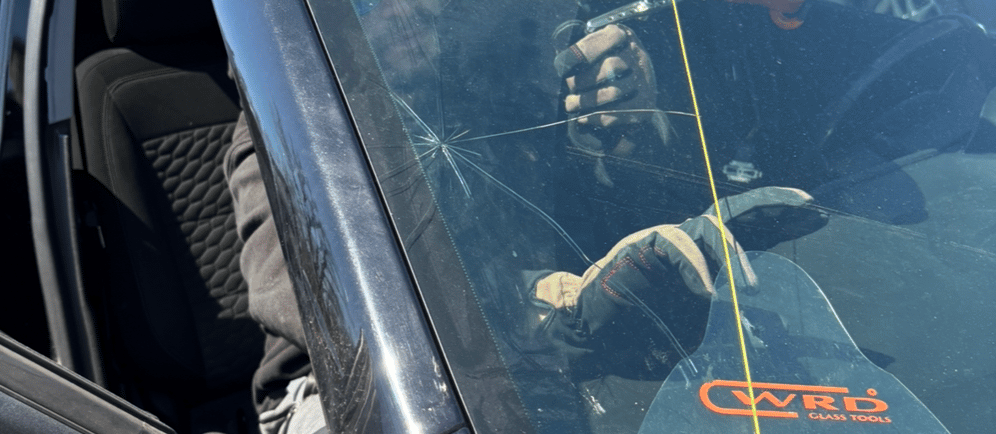The Cost of Ignoring Windshield Damage: What You Need to Know
WINDSHIELD REPAIR AND REPLACEMENT


Understanding Windshield Damage
Windshield damage is a common issue faced by vehicle owners, and it is essential to recognize the various types and causes of this damage to address it promptly. The most frequent types of windshield damage include chips, cracks, and spiderwebs. Each of these forms of damage can significantly impact the safety and integrity of a vehicle's windshield.
Chips are typically small, circular indentations that occur when debris strikes the windshield. These can be superficial or penetrate through the glass. Although they may appear minor, ignoring chips can lead to more significant issues if they spread or deepen. Cracks, on the other hand, can vary in length and severity. They often result from a combination of factors, including temperature fluctuations which cause the glass to expand and contract. Additionally, larger cracks can impair the driver's visibility, posing a safety hazard.
Spiderwebs are a specific type of crack that radiates outward from a single point of impact, resembling the pattern of a spider’s web. This type of damage indicates that the windshield has sustained a significant impact and may require immediate attention. Understanding these types of damage is crucial for vehicle maintenance.
Common causes of windshield damage often include road debris such as stones, gravel, or other materials that may strike the glass while driving. Furthermore, extreme temperatures can contribute, as rapid changes from hot to cold can stress the material. Accidents and even minor collisions can also lead to significant damage. It is vital for drivers to routinely inspect their windshields for any signs of chips or cracks so that they can take the necessary steps to address the damage before it worsens and becomes costlier to repair.
The Risks of Ignoring Windshield Damage
Windshield damage, whether minor chips or extensive cracks, poses significant risks that should not be overlooked. One of the most immediate dangers associated with such damage is compromised visibility. A clear windshield is crucial for safe driving, as it allows the driver to see the road, other vehicles, and obstacles clearly. Even small chips can refract light, creating glare and distortion, which can lead to dangerous driving conditions. In adverse weather conditions, such as rain or fog, damaged windshields can obstruct vision even further, increasing the likelihood of accidents.
In addition to visibility issues, ignoring windshield damage can lead to weakened structural integrity of the vehicle. The windshield plays a critical role in a car's overall strength and safety, acting as a support for the roof and contributing to the proper deployment of airbags during a collision. Damage that may seem inconsequential initially can gradually compromise this structural support, making the vehicle less durable in the event of an accident. This weakened framework increases the risk of injury for passengers, as the vehicle may not withstand impacts as effectively.
Furthermore, forgotten or unnoticed windshield damage can escalate into more significant safety concerns over time. Factors such as temperature changes, humidity, and road vibrations can exacerbate existing chips and cracks, leading to larger, more expensive repairs. The more extensive the damage, the higher the risk of sudden shattering while driving, which can lead to catastrophic situations on the road. Therefore, it is essential for vehicle owners to regularly inspect their windshields for any signs of damage and seek prompt repair to ensure their safety and the safety of others on the road.
Financial Implications of Delaying Repairs
Ignoring windshield damage can lead to significant financial repercussions that extend beyond the initial cost of repair. When a chip or crack occurs, many vehicle owners might think that postponing repairs is a viable solution. However, this decision often results in more severe damages that necessitate a full windshield replacement, which is substantially more expensive than a simple repair. According to studies, small chips can escalate into larger cracks within just a few days, especially if exposed to extreme weather conditions or road vibrations. The cost difference between a repair, averaging around $50 to $150, and a full replacement can range from $300 to $1,000.
Moreover, continuing to drive with a damaged windshield poses safety risks, not only to the vehicle occupants but also to other road users. In many jurisdictions, driving with a compromised windshield might attract legal penalties. Specific regulations mandate that drivers maintain their vehicles in a safe operating condition, thereby leading to fines or citations for those who do not comply. These penalties can further burden the financial implications of neglecting windshield repairs.
Additionally, delaying repairs may influence insurance premiums. Insurers often take into account a driver's history regarding maintenance and safety. In the event of a claim resulting from an accident attributed to poor visibility due to windshield damage, insurance companies might increase premium rates upon renewal. A study by the Insurance Institute for Highway Safety revealed that drivers who consistently fail to address vehicle damages, including windshield issues, see a notable rise in premiums, sometimes reaching up to 20% more than those who maintain their vehicles properly.
In light of these factors, prioritizing windshield repairs not only ensures safety but also minimizes long-term financial damage. By addressing such issues promptly, vehicle owners can avoid escalating costs, legal consequences, and potential increases in insurance premiums.
When to Seek Professional Help
Identifying the appropriate time to seek professional assistance for windshield damage is crucial for vehicle safety and integrity. Several signs indicate that immediate action is required. Firstly, any cracks or chips larger than a quarter can compromise the structural integrity of the windshield and should be assessed by a professional. Additionally, if the damage obstructs the driver’s view, it is imperative to seek help without delay, as this can significantly increase the risk of accidents.
Another essential consideration is the location of the damage. Cracks at the edges of the windshield or those that radiate outwards can worsen over time and may necessitate a full replacement rather than a simple repair. Conversely, minor chips located in the periphery of the glass may be eligible for repair, but it is important to consult with an expert to make this determination. Delaying repairs not only escalates the potential costs but can also lead to more severe damage that may require total windshield replacement.
Timeliness is of the essence when dealing with windshield damage. Weather conditions, such as temperature fluctuations or exposure to moisture, can exacerbate existing issues, making prompt repair vital. If you notice any changes in the condition of your windshield or if you have been involved in an incident that impacts the glass, it is wise to contact a professional soon after.
In summary, recognizing the signs of significant windshield damage and understanding when to seek help can save you from further complications and expenses. Regular inspections and prompt action will not only ensure your safety on the road but can also maintain the value of your vehicle over time.
Cost Comparisons: Repair vs. Replacement
When assessing the financial implications of windshield damage, understanding the cost differences between repair and replacement is crucial. The cost of windshield repair typically ranges from $50 to $150, depending on various factors such as the size and location of the damage. Repairs are generally feasible for minor chips and cracks, defined by most specialists as damage no larger than a quarter and not located near the edges of the windshield. Factors such as type of vehicle can influence repair costs, with luxury cars often experiencing higher service fees due to specialized glass requirements.
In contrast, windshield replacement costs can be significantly higher, often falling between $200 and $1,000. The elevated price is attributed to the need to procure a new windshield, which may vary based on the make and model of the vehicle. Additionally, the complexity of the installation process can further drive up costs. For instance, vehicles equipped with advanced safety features, such as sensors for lane departure warnings or adaptive cruise control, may require recalibration after the windshield is replaced, adding to the overall expense.
Insurance coverage also plays a vital role in cost distinctions between repair and replacement. Many insurance policies cover windshield repairs with little to no out-of-pocket expense; however, the approach taken may vary depending on your deductible and chosen plans. If the damage is extensive enough to necessitate a full windshield replacement, those with comprehensive insurance coverage might find that the costs are partially or fully covered. Therefore, it is wise for vehicle owners to consult their insurance providers to clarify coverage options while assessing the financial ramifications of and solutions for windshield damage.
Insurance Considerations and Coverage
When addressing windshield damage, understanding the various types of insurance coverage available is essential. The most applicable coverages for windshield repairs or replacements are comprehensive and collision coverage, with liability coverage typically offering no protection for windshield issues. Liability insurance generally covers damages that the policyholder causes to other vehicles or property, but it does not include damage to the policyholder's own car, including the windshield.
Comprehensive coverage is particularly relevant in situations of windshield damage, as it protects against various non-collision incidents such as falling debris, vandalism, and weather-related events. This type of coverage can often facilitate repairs or replacements without requiring the policyholder to pay a deductible, depending on the specifics of the insurance policy. It is advisable for policyholders to carefully review their comprehensive coverage terms to understand the particular stipulations concerning windshield damage.
On the other hand, collision coverage includes damage incurred from an accident, which may involve another vehicle or an object. This type of coverage can be essential when the windshield sustains damage as a result of an impact. However, policymakers often impose a deductible, meaning the insured must pay a portion of the repair or replacement costs, which could vary depending on the specific policy terms.
Additionally, it is critical for policyholders to conduct a thorough review of their insurance policy, ensuring they are aware of any exclusions or limitations concerning windshield repairs. Having clear knowledge about what is covered can significantly aid in decision-making when it comes to dealing with repairs or replacements. Being proactive and informed enables policyholders to avoid unnecessary expenses, ensuring optimal maintenance of their vehicle while adhering to their coverage terms.
Preventive Measures to Avoid Windshield Damage
Preventing windshield damage is a crucial aspect of maintaining vehicle safety and ensuring the longevity of one's automobile. The incorporation of regular vehicle maintenance is essential in this regard. Regular inspections of the windshield, alongside general vehicle upkeep, can help identify any existing issues before they escalate into more significant problems. Checking for cracks, chips, or other damage should be done routinely, as early detection often translates to lower repair costs.
Safe driving practices also play a vital role in avoiding windshield damage. Drivers should remain cautious of road conditions, particularly in adverse weather or in areas with heavy construction. Maintaining a safe distance from vehicles, especially those carrying debris, can significantly reduce the risk of windshield impacts. Moreover, being aware of sudden stops and driving at moderate speeds can further help in mitigating the chances of damage caused by sudden jolts or minor collisions.
In addition to these practices, the use of protective products can be an effective strategy in safeguarding the windshield. Windshield covers, for instance, can protect the glass from harsh weather conditions, including severe heat, hail, or snow. These covers act as a barrier against the elements, reducing the risk of cracking due to thermal stress. Similarly, employing a protective film can help absorb minor impacts, preventing chips from developing into larger cracks.
Integrating these preventive measures into daily driving habits not only saves money in the long run but also enhances road safety for all. Proactively addressing windshield care through maintenance, cautious driving, and protective solutions can significantly reduce the likelihood of damage, ultimately preserving the integrity of the vehicle and the safety of its occupants. In summary, a commitment to these practices is essential for any responsible vehicle owner.
